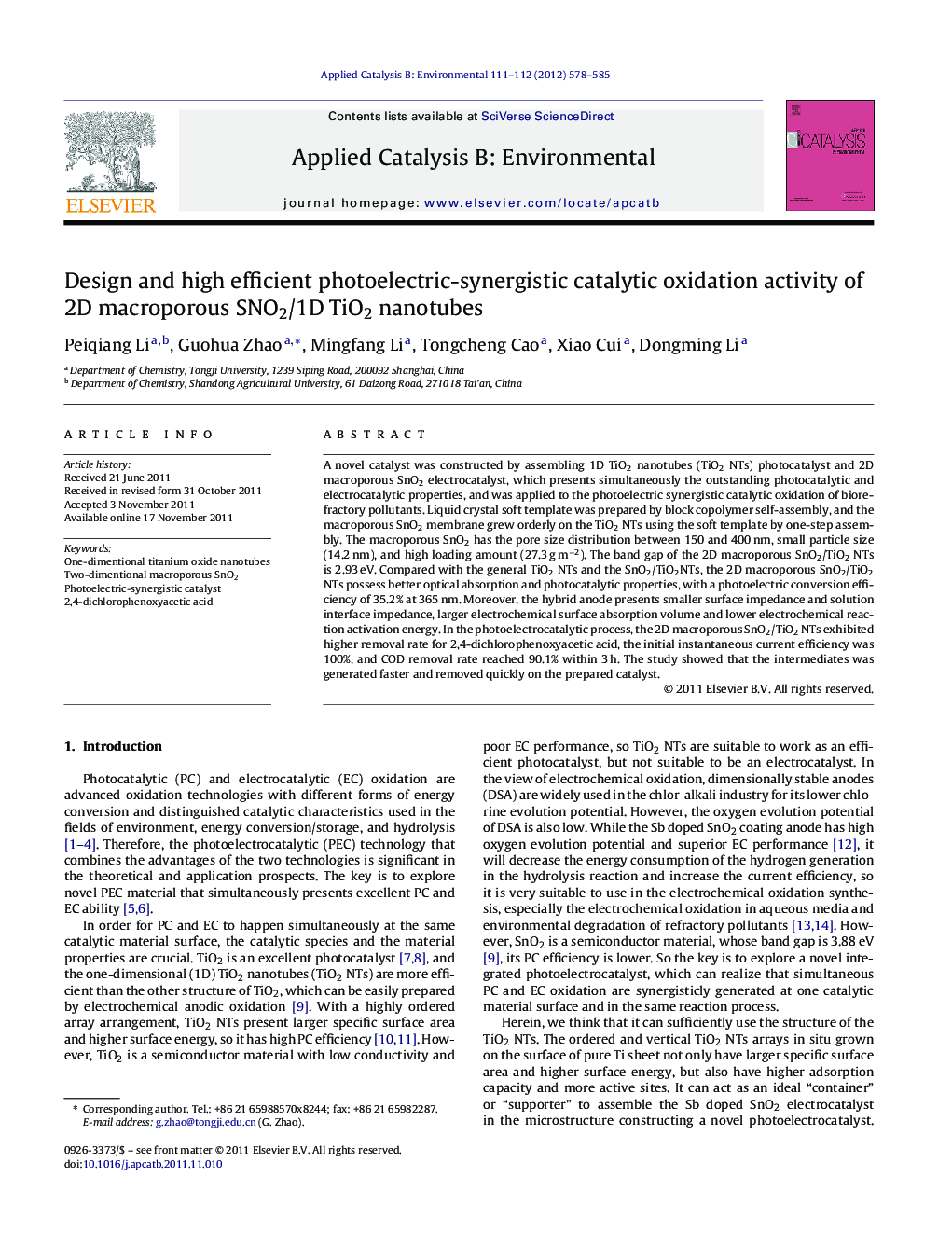| Article ID | Journal | Published Year | Pages | File Type |
|---|---|---|---|---|
| 46509 | Applied Catalysis B: Environmental | 2012 | 8 Pages |
A novel catalyst was constructed by assembling 1D TiO2 nanotubes (TiO2 NTs) photocatalyst and 2D macroporous SnO2 electrocatalyst, which presents simultaneously the outstanding photocatalytic and electrocatalytic properties, and was applied to the photoelectric synergistic catalytic oxidation of biorefractory pollutants. Liquid crystal soft template was prepared by block copolymer self-assembly, and the macroporous SnO2 membrane grew orderly on the TiO2 NTs using the soft template by one-step assembly. The macroporous SnO2 has the pore size distribution between 150 and 400 nm, small particle size (14.2 nm), and high loading amount (27.3 g m−2). The band gap of the 2D macroporous SnO2/TiO2 NTs is 2.93 eV. Compared with the general TiO2 NTs and the SnO2/TiO2NTs, the 2D macroporous SnO2/TiO2 NTs possess better optical absorption and photocatalytic properties, with a photoelectric conversion efficiency of 35.2% at 365 nm. Moreover, the hybrid anode presents smaller surface impedance and solution interface impedance, larger electrochemical surface absorption volume and lower electrochemical reaction activation energy. In the photoelectrocatalytic process, the 2D macroporous SnO2/TiO2 NTs exhibited higher removal rate for 2,4-dichlorophenoxyacetic acid, the initial instantaneous current efficiency was 100%, and COD removal rate reached 90.1% within 3 h. The study showed that the intermediates was generated faster and removed quickly on the prepared catalyst.
Graphical abstractFigure optionsDownload full-size imageDownload as PowerPoint slideHighlights► 2D macroporous SnO2/1D TiO2 NTs prepared using the soft template method. ► Prepared anode presents excellent photocatalytic and electrocatalytic properties. ► 2D macroporous SnO2/1D TiO2 NTs with synergistic photoelectrocatalytic function.
